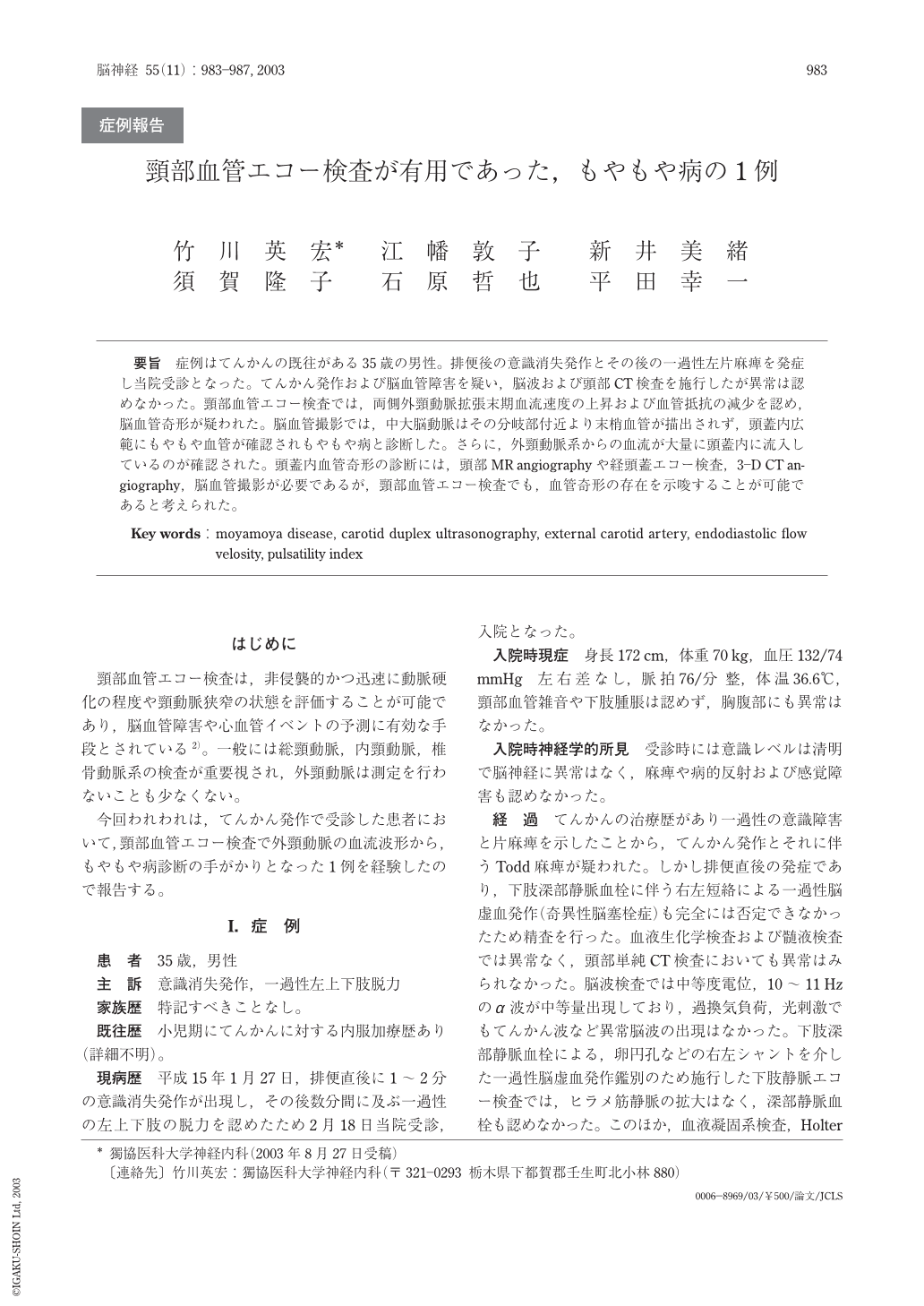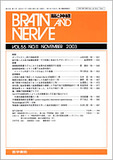Japanese
English
- 有料閲覧
- Abstract 文献概要
- 1ページ目 Look Inside
要旨 症例はてんかんの既往がある35歳の男性。排便後の意識消失発作とその後の一過性左片麻痺を発症し当院受診となった。てんかん発作および脳血管障害を疑い,脳波および頭部CT検査を施行したが異常は認めなかった。頸部血管エコー検査では,両側外頸動脈拡張末期血流速度の上昇および血管抵抗の減少を認め,脳血管奇形が疑われた。脳血管撮影では,中大脳動脈はその分岐部付近より末梢血管が描出されず,頭蓋内広範にもやもや血管が確認されもやもや病と診断した。さらに,外頸動脈系からの血流が大量に頭蓋内に流入しているのが確認された。頭蓋内血管奇形の診断には,頭部MR angiographyや経頭蓋エコー検査,3-D CT angiography,脳血管撮影が必要であるが,頸部血管エコー検査でも,血管奇形の存在を示唆することが可能であると考えられた。
The patient is a 35-year-old man who had a medical history of epilepsy in childhood. He came to our hospital because of transient disturbance of consciousness and left hemiplegia just after evacuation. At first, we thought that he had epilepsy with Todd's palsy. But we had to do a differential diagnosis for a transient ischemic attack such as paradoxical embolism, because his symptoms occurred just after evacuation. An electroencephalogram and brain computerized tomography were immediately performd, but no abnormality was detected. Hematologic studies were normal, and no deep vein thrombosis was detected in the veins of the lower extremities by duplex ultrasonography Doppler. But carot-id duplex ultrasonography showed an increase in end-diastolic flow velocity and a decrease in vascular resistance in both external carotid arteries. These findings indicated that there was arteriovenous malformation such as moyamoya desease. Brain magnetic resonance imaging showed spotty high signal lesions in the subcortical areas on a fluid-attenuated inversion-recovery(FLAIR) image, and the middle cerebral artery was not visualized on magnetic resonance angiography (MRA). Cerebral angiography demonstrated moyamoya vessels in the brain and collateral circulation from the external carotid artery. Therefore, we diagnosed him as having moyamoya disease. Duplex ultrasonography of the common and, internal carotid, and vertebral arteries is a widely-used technique. Recently, cerebral angiography, MRA and transcranial Doppler have been applied to detect intracranial vascular malformation. But these results suggested that moyamoya disease could be detected by means of carotid duplex ultrasonography. Finally, we considered that carotid duplex ultrasonography was not only a noninvasive screening method but also a usefull for the diagnosis of moyamoya disease.

Copyright © 2003, Igaku-Shoin Ltd. All rights reserved.


